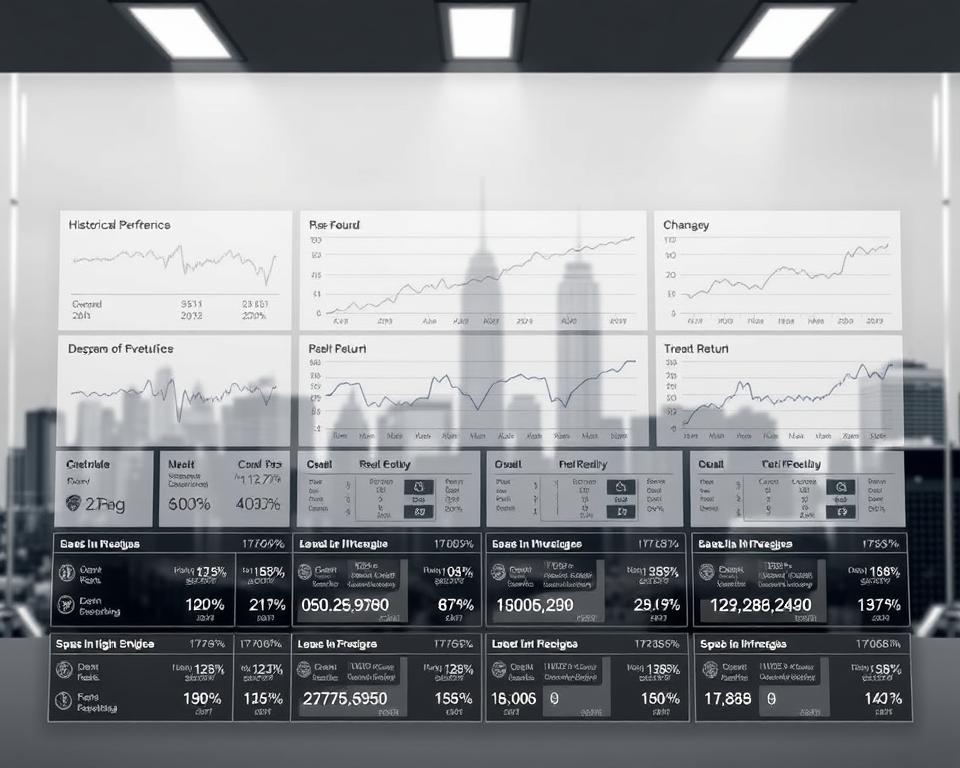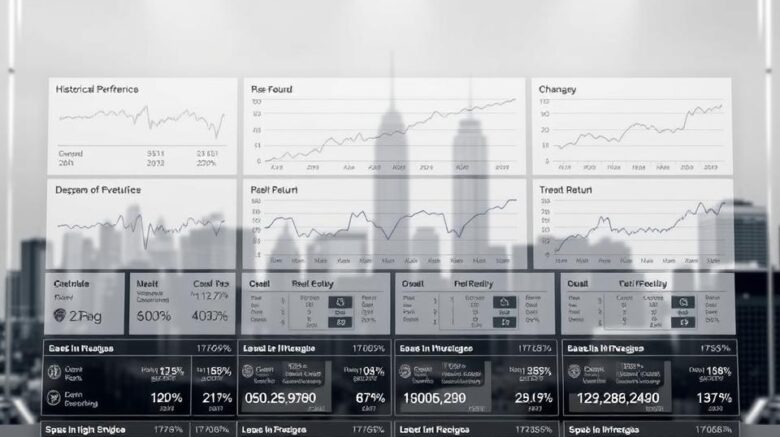Insights for CLO Equity Investors – A Guide
It’s true: more than 60% of institutional investors consider CLOs indispensable to their portfolios. Exploring the realm of CLO investment reveals why this asset class is becoming more attractive. Investors enjoy the prospect of compelling yields, steady cash flows, and risk spreading. Such advantages serve as a buffer in turbulent markets.
Here, we unpack the essentials of CLO equity. Topics include the value of veteran CLO managers, the distinctive features of CLO equity vehicles, and investor roles. Ultimately, you’ll see why CLO equity is an enticing option for those looking to improve their holdings.
- Institutional investors gain meaningful diversification from CLOs.
- The cash flow dynamics of CLO equity can provide attractive returns.
- The track record of seasoned managers greatly influences results.
- Investing in CLO equity can buffer against economic downturns.
- Alternative investors are turning more to CLO equity funds.
Introduction to CLOs and CLO Equity
Understanding CLOs highlights their importance in the financial landscape. They pack together senior, below-investment grade loans into one product. They make up a significant part of the $1.4 trillion structured credit market. Investors are keen to grasp the essence of these instruments, focusing on what CLO equity represents.
CLO equity is a claim on the remaining cash flows from CLOs after all debt is paid off. In a low-rate environment, this feature delivers attractive income potential. Their variable rates protect investors from rate shifts. This makes CLOs an attractive investment option.
Knowing the anatomy of CLOs and their equity slice is critical for sizing up risk and reward. I intend to shed light on these structures. I aim to show their importance in guiding investment choices.

CLO Equity Investors: Why This Asset Class?
Investing in CLO funds offers a unique chance to diversify portfolios. Investors are drawn by proven performance and yields. For steady returns during turbulence, CLO equity stands out.
The Attractive Return of CLO Equity
Investors often see double-digit annual cash yields from CLO equity. During reinvestment periods, returns can soar to mid-to-high teens. This makes CLO equity a top choice for those seeking high yields without compromising on quality.
Historical Performance of CLO Equity
CLO equity’s historical performance shows its ability to thrive in different market conditions. Rather than delayed payoffs, it delivers regular quarterly income, avoiding a J-curve. Thus, it stands as a go-to for steady income and risk balance, affirming its role in portfolios.
How CLOs Are Built
CLO structures are complex, yet they offer a compelling investment opportunity. At their core is the cash flow waterfall, a system that outlines how payments are allocated among different tranches. Every slice carries distinct risk-reward characteristics. Senior tranches, backed by high-quality collateral, receive payments first. Lower tranches accept more risk hoping for richer payouts.
Senior secured loans are a key component in CLOs. With first-lien status, they top the payment queue if borrowers default. Hence, CLOs often carry lower risk than plain corporate bonds, suiting risk-aware investors.
Defining Features of CLO Equity
Their unique cash distribution timeline sets them apart. They generate large early distributions, speeding payback. Different from private equity’s delayed payoff structure. Such dynamics cement CLO equity’s niche in credit markets.
Early Cash Flows in CLO Equity
Cash flow behavior lies at the heart of CLO equity’s allure. Early large cash distributions deliver faster return on investment. By the time the equity tranche is considered, cash distributions have already surpassed many traditional investments. This is highly beneficial for institutional investors seeking liquidity without sacrificing upside.
Flexibility Across Market Cycles
Managers adjust portfolios dynamically through economic cycles. They tweak exposures based on evolving market signals. This active management preserves value and allows CLO equity to thrive in changing market conditions. Understanding these features reveals the resilience and adaptability of CLO equity instruments.
Why CLOs Diversify Your Portfolio
Investing in CLOs brings significant diversification benefits to my portfolio. They offer access to many issuers, reducing single-credit exposures. Their returns often move independently of equities and bonds.
Manager-driven adjustments set CLO equity apart. They monitor and adjust investments to achieve superior performance, adapting to market changes. This adaptability is key to managing risks and ensuring my investment’s resilience against economic shifts.
The diverse assets in CLOs not only spread risk but also stabilize cash flow. It appeals to investors craving steady payouts amid volatility. By investing in CLO funds, I position myself for a diversified investment strategy.
CLO Equity Investors: Assessing Risk Factors
You must recognize the hazards tied to CLO equity. The economic landscape shifts constantly, making it critical for credit risk investors to stay alert to these risks. They must be aware of the vulnerabilities tied to these investments.
Loan and Collateral Hazards
Credit and collateral risks are at the heart of CLO risk factors. Economic downturns can worsen loan defaults. If the economy slows, leveraged loans may struggle. Consequently, equity payouts may shrink as collateral quality dips.
This scenario poses significant risks to equity holders. I focus on evaluating the quality of loans and the strength of collateral when considering CLO equity investments. This ensures I’m aware of the risks involved.
Market Risk in CLO Equity
Liquidity shortages pose real threats to equity holders. In times of financial stress, the market for CLO equity can become tight. This restricts the ability to sell or trade these investments without significant losses. Valuation swings often widen in bad markets.
Staying on top of market trends helps mitigate losses. Selecting managers with a track record of preserving capital under stress can blunt downside.
Exploring CLO equity investment strategies is key to aligning with my financial goals and risk tolerance. There are multiple paths to enter the CLO equity space. Consider these popular structures:
- Dedicated CLO Funds: They focus on selected equity tranches. They allow me to invest in a diversified portfolio, curated by seasoned managers.
- Single-Deal Equity Deals: This method lets me invest directly in individual CLO transactions. It demands thorough understanding but yields customized exposure.
- Multi-Asset Credit Funds: They blend equity tranches with other debt products. This hybrid approach can lower overall portfolio volatility.
All approaches require weighing trade-offs. For example, captive equity funds are great for newcomers to CLO investments. They deliver oversight and built-in risk spreading. Direct investments, while potentially rewarding, require a deep understanding of the market. Multi-asset credit funds offer a unique blend of asset classes, helping navigate market fluctuations.
Evaluating these options allows me to optimize my mix. It matches my objectives, capacity, and comfort with risk.
How Managers Drive CLO Returns
Manager expertise underpins equity performance. Their expertise in managing portfolios during reinvestment periods can significantly boost returns. Their engagement steers portfolios through tough markets. It allows them to capture upside effectively.
Choosing the right CLO manager is critical. Prioritize managers with history of navigating defaults and resets. Skilled CLO equity managers adapt well to market changes, impacting CLO performance. Their judgment and credit selection skills uphold performance amid cycles.
Picking the right team can change return profiles dramatically. Recognizing this helps investors enhance returns.
Comparing CLO Equity to Alternatives
Here, we contrast CLO equity with other high-income plays. We aim to clarify CLO equity’s place in a broader portfolio. Understanding these nuances guides optimal strategy.
CLO Equity or Private Equity?
Comparing CLO equity to private equity reveals several key differences. CLO equity provides faster payouts and tradability, whereas private equity typically ties up capital long-term.
- Risk factors: Operational bets in private equity can heighten risk. CLOs, with their diversified asset pools, can reduce individual credit risks.
- Performance Patterns: Long-haul PE upside is tempting, yet CLOs offer predictable, competitive current yields.
- Duration: You’re locked in with PE, but can exit CLO equity relatively swiftly.
Comparing CLO Equity and High-Yield Debt
How do high yield credits stack against CLO equity? They produce income, although their mechanics and hazards vary. High yield bonds have fixed interest payments and are sensitive to interest rate changes, leading to volatility.
- Income Edge: CLO equity benefits from cash flows from a diversified portfolio of leveraged loans.
- Default Exposure: HY credit rests on one company, while CLOs dilute single-issuer risk.
- Yield Comparison: In strong markets, CLO equity yields often exceed junk bonds and hold up better to rate shifts.
Looking ahead, the CLO investing landscape is set to change dramatically. Emerging CLO ETFs may open the market to new investor classes. Greater ETF flows might deepen markets and improve pricing signals.
Regulatory changes are also on the horizon, poised to significantly impact the CLO market. They could tighten credit controls and standardize valuations. Staying informed on rulemaking helps me adjust my strategy.
New tech will revolutionize how we analyze and price CLO tranches. They support sharper analysis of loan pools and economic signals. They allow me to spot and act on nascent credit opportunities.
